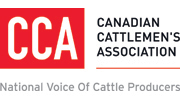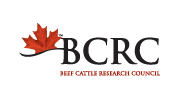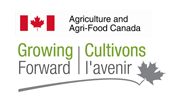2015 National Retail Meat Case Study
| Project Code: | BQU.07.13 |
| Completed: | 2016 |
Project Title:
National Beef Quality Audit
Researchers:
Mark Klassen (Canadian Cattlemen's Association) klassenm@cattle.ca
Jennifer Aalhus, PhD, and Manuel Juárez, PhD (Agriculture and Agri-Food Canada)
Background
Asking consumers what they buy, what they would like to buy, or what they’re willing to pay for something doesn’t necessarily reflect what consumers really do. Measuring the amount of shelf space a food store dedicates to different products provides a more accurate measure of consumer preference than a survey. Benchmarking key attributes of the Canadian meat case can help guide future strategy development that will support the viability and profitability of the Canadian beef sector.
Objectives
To document the types of fresh beef products sold to Canadian beef consumers by national retail stores across Canada.
What They Did
Two investigators visited a total of 70 stores spread across AB, ON, QC and BC. The stores represented the national retail store chains and the number of stores visited was in proportion to the company’s market share. Data on the following was recorded:
- overall length/linear feet of fresh meat case and estimate of space occupied by beef, chicken, fresh pork and all other items
- cut name, size/weight, fixed vs. net weights, price per kilo, grade, tenderized or not, value added, bone-in/out, and for ground beef: fat content and source grind
- prepared in-store or not, packaging type and number of packages
- package information: origin claims (e.g. Product of Canada), production claims (e.g. organic, raised without hormones or antibiotics), presence of cooking instructions and presence of nutrition information
What They Learned
On average, beef products had 29% of the linear feet of retail meat cases. Pork had 32%, poultry had 28% per cent, and other meats had 8% of linear feet. The remaining 3% was non-meat items or empty space. Stores in Western provinces allocated a greater percentage of self-serve counter space to beef than stores in the East.
Out-of-stock beef items were found at 21% of the eastern stores and 32% of the western stores.
The average price per kilogram of beef steak was $28.22/kg, and average price per package of steak was $12.14. The average price per kilogram of roast was $19.55/kg, and average price per package of roast was $29.00. Package weights for steaks and roasts was higher in Alberta than in other provinces.
Overall, 18% of roast packages and 17% of steak packages were featured with special pricing, most commonly in Quebec. 13% of stores sold roasts and steaks in larger-quantity value packs, with steak in value packs being more common in the West.
Steaks accounted for approximately 50% of the packages in the East and West. Ground products followed at 24% and were more common in the East (26%) than the West (20%). 9% of the packages were roasts. The remainder included cubes (7%), organ meats (3%), ribs (2%), strips (2%), sausage (0.3%), and other (2%).
15% of roasts and 16% of steaks were mechanically tenderized to enhance eating quality. This was more common in Quebec.
Nutritional information was provided on less than 5% of steak and roast packages. The most common instruction on roasts and steaks had to do with safe storage, such as “keep refrigerated”.
There was no grading information on 55% of the roast packages, most frequently in Quebec and British Columbia. Grading information on roasts was most common in Alberta. When grading information was on the roast package, it was most often for Canada AAA (31%). Similarly for steaks, there was no grading information on 56% of the packages. When grading information appeared, it was mostly Canada AAA (27%) and grading information appeared most often in the West.
Traceability claims were the most common cattle-production attribute noted on packages. 9% of roasts and 8% of steaks had a traceability claim. This was largely a western phenomenon.
Overall, 51% of stores visited had Canadian Beef signage. 17% had Canadian Pork signage. This signage was most prevalent in Alberta.
Less than 2% of both steaks and roasts carried claims related to animal diets. The most common was for corn fed, followed by grass fed and then grain-fed beef.
The claim of fed “no animal byproducts” was seen on 2% of steak and of roasts. Organic status was noted on 1% of roasts and steaks; “antibiotic free” on 3-4% of roasts and steaks; “hormone free” (a claim technically not permitted) on less than 1% of roasts and steaks; “no hormones added” on 3-4% of roasts and steaks; and “certified humane” on 2% of roasts and none of the steaks in the stores surveyed. Overall, 1% of roasts and steaks were identified as halal, while no roasts and 0.3% of steaks were identified as kosher.
What It Means
There are significant regional differences in beef product mix and merchandising approaches across Canada. While some of these differences may genuinely reflect regional differences in demand, there is certainly an opportunity to examine how products currently successful in selected retail stores and/or cities could be helpful to building volume and sales in other locations.
The findings also support the opportunity for the industry to enhance communication to consumers through information on the package, recognizing that it is the only means of communicating with consumers that is present at both the point of purchase and on the product at the time of preparation in the home.
${pageBreak}










